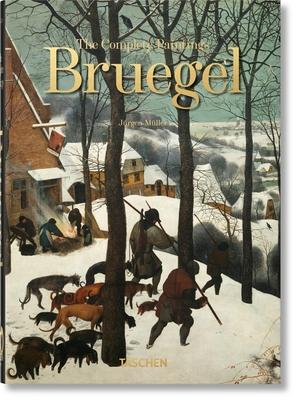The life and times of Pieter Bruegel the Elder (c. 1526/30-1569) were marked by stark cultural conflict. He witnessed religious wars, the Duke of Alba's brutal rule as governor of the Netherlands, and the palpable effects of the Inquisition. To this day, the Flemish artist remains shrouded in mystery. We know neither where nor exactly when he was born. But while early scholarship emphasized the vernacular character of his painting and graphic work, modern research has attached greater importance to its humanistic content. Starting out as a print designer for publisher Hieronymus Cock, Bruegel produced numerous print series that were distributed throughout Europe. These depicted vices and virtues alongside jolly peasant festivals and sweeping landscape panoramas. He then increasingly turned to painting, working for the cultural elite of Antwerp and Brussels. Rather than idealizing reality, he bravely confronted the issues of his day, addressing the horrors of religious warfare and taking a critical stand against the institution of the Church. To this end, Bruegel developed his own pictorial language of dissidence, lacing innocuous everyday scenes with subliminal statements in order to escape repercussions. This book is derived from our XXL monograph, which saw TASCHEN undertake a comprehensive photographic survey of the artist's oeuvre. The result boasts exceptional details and reproductions, unveiling Bruegel's larger-than-life universe with unprecedented clarity. This volume, in celebration of our 40th anniversary, presents all 40 paintings, accompanied by enlarged details and accessible, immersive texts.

The life and times of Pieter Bruegel the Elder (c. 1526/30-1569) were marked by stark cultural conflict. He witnessed religious wars, the Duke of Alba's brutal rule as governor of the Netherlands, and the palpable effects of the Inquisition. To this day, the Flemish artist remains shrouded in mystery. We know neither where nor exactly when he was born. But while early scholarship emphasized the vernacular character of his painting and graphic work, modern research has attached greater importance to its humanistic content. Starting out as a print designer for publisher Hieronymus Cock, Bruegel produced numerous print series that were distributed throughout Europe. These depicted vices and virtues alongside jolly peasant festivals and sweeping landscape panoramas. He then increasingly turned to painting, working for the cultural elite of Antwerp and Brussels. Rather than idealizing reality, he bravely confronted the issues of his day, addressing the horrors of religious warfare and taking a critical stand against the institution of the Church. To this end, Bruegel developed his own pictorial language of dissidence, lacing innocuous everyday scenes with subliminal statements in order to escape repercussions. This book is derived from our XXL monograph, which saw TASCHEN undertake a comprehensive photographic survey of the artist's oeuvre. The result boasts exceptional details and reproductions, unveiling Bruegel's larger-than-life universe with unprecedented clarity. This volume, in celebration of our 40th anniversary, presents all 40 paintings, accompanied by enlarged details and accessible, immersive texts.